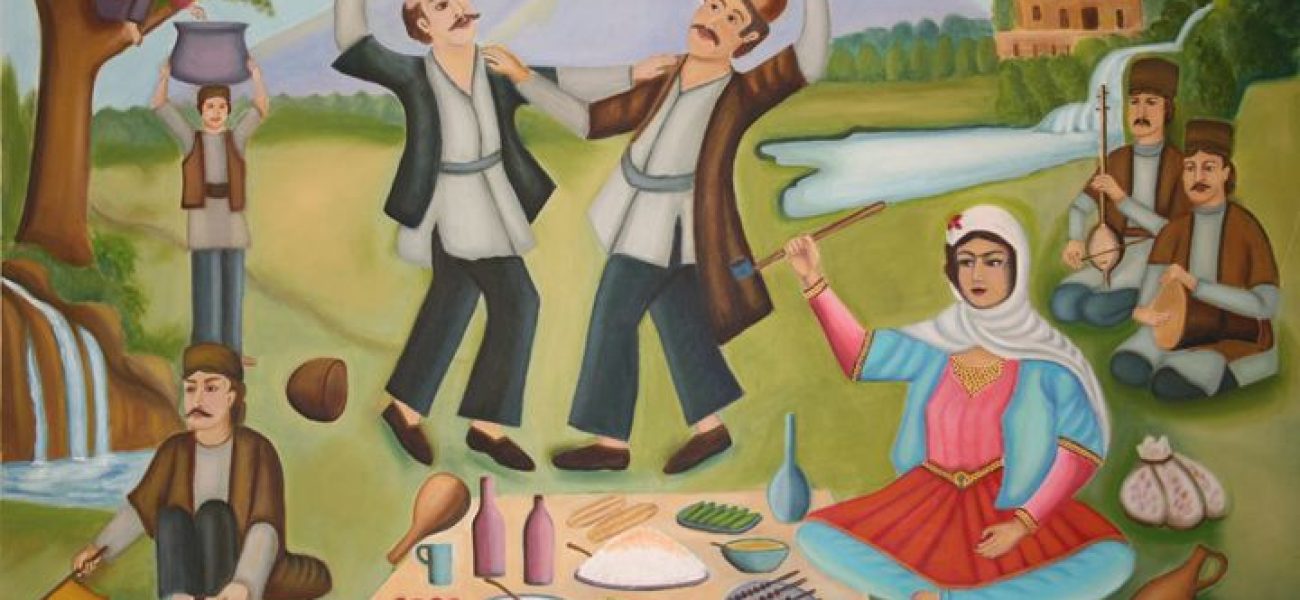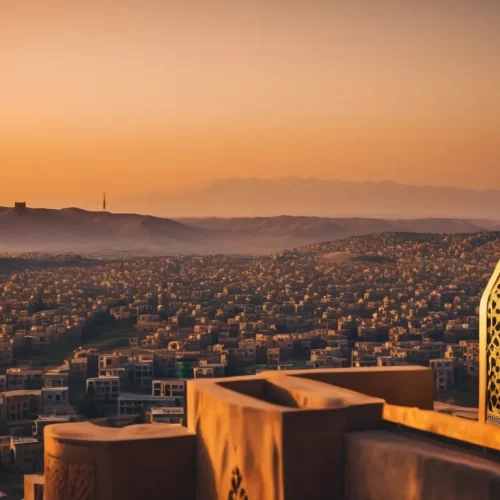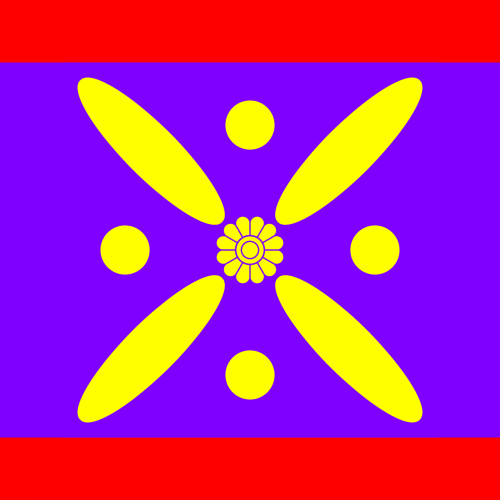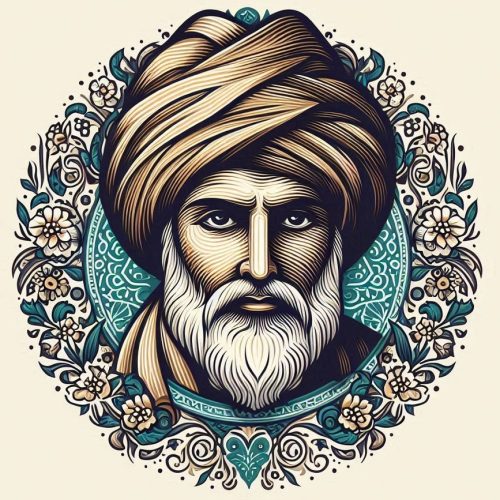In the kaleidoscope of Iran’s rich cultural tapestry, the festival of Sizdah Bedar stands as a vibrant celebration, encapsulating the spirit of renewal and connection with nature. Observed annually on the thirteenth day of Farvardin, the first month of the Iranian calendar, Sizdah Bedar transcends its calendrical significance to become a day of communal joy, family gatherings, and a heartfelt embrace of the natural world.
Historical Roots and Cultural Significance
Ancient Roots: Sizdah Bedar’s origins can be traced back to the ancient roots of Persian traditions, providing a captivating glimpse into the cultural practices of pre-Islamic Iran. The festival’s inception lies in the symbolism associated with the number thirteen, considered unlucky in Iranian folklore. This superstition birthed the custom of spending the thirteenth day of the new year outdoors, laying the foundation for what would evolve into the exuberant celebration of Sizdah Bedar.
Over millennia, the observance has metamorphosed from a cautious superstition into a cherished cultural tradition, illustrating the adaptive nature of Iranian customs. What began as a measure to ward off ill luck has transformed into an annual jubilation, binding generations together in a shared reverence for nature.
The Nature’s Day Connection: Sizdah Bedar’s moniker, “Nature’s Day,” encapsulates its profound connection to the natural world. Beyond being a mere cultural observance, the festival embodies a holistic celebration of the environment, marking a harmonious interplay between humanity and nature. Iranians view this day as an opportunity not only for familial and communal bonding but also for communion with the earth’s splendor.
The choice of the thirteenth day as Nature’s Day carries deep cultural resonance, symbolizing a collective defiance against superstitions. It underscores the transformative power of culture, turning what was once feared into an occasion of joy, laughter, and a vibrant connection with the environment.
Rituals and Customs

Outdoor Excursions
Sizdah Bedar’s celebration unfolds as a collective embrace of nature, transcending the boundaries of age, gender, and social status. Families, friends, and even strangers come together to partake in the joyous occasion, transforming public spaces into vibrant hubs of communal activity. Parks, meadows, and riversides become tapestries of colorful Persian carpets, adorned with an array of traditional dishes and the laughter of revelers.
Beyond the convivial atmosphere, the act of venturing into the open holds a deeper cultural resonance. It symbolizes a communal affirmation of life, a deliberate and joyous connection with the earth beneath and the sky above. Children engage in playful games, elders share stories, and the younger generation immerses themselves in the boundless beauty of the natural surroundings. Sizdah Bedar becomes a living testament to the enduring vitality embedded in the Iranian cultural fabric.
Sabzeh and the Ritual of Nature
Central to the Sizdah Bedar experience is the presence of Sabzeh, the carefully nurtured sprouted seeds or lentils. This verdant symbol represents not only the renewal of life but also the promise of a prosperous year ahead. Families meticulously prepare the Sabzeh in the days leading up to the festival, fostering a sense of anticipation and shared responsibility.
The rituals involving Sabzeh add layers of symbolism to the celebration. Tying knots with the green shoots is a playful gesture, believed to transfer any negative energy or ill fortune accumulated over the year onto the sprouts. This act reflects the ancient wisdom embedded in Iranian culture, a poignant reminder of the cyclical nature of life and the ever-present potential for renewal.
Beyond its symbolic significance, Sabzeh becomes a centerpiece in the outdoor gatherings. Families arrange their Sabzeh alongside traditional Nowruz items, creating a tableau that captures the essence of Sizdah Bedar – a harmonious blend of cultural heritage and the beauty of nature.
Playful Traditions
Sizdah Bedar emerges as a day of lightheartedness and joy, where playful customs add a unique charm to the festivities. The widely practiced act of tying knots with the Sabzeh transforms into a delightful exchange of banter and laughter. Friends and family playfully tease one another, creating an atmosphere of camaraderie and shared mirth.
Pranks and light-hearted humor become integral to the celebration, providing a temporary escape from the rigors of daily life. Laughter echoes through the outdoor spaces, creating an ambiance of shared happiness that transcends generational and cultural boundaries. In these playful traditions, Sizdah Bedar encapsulates the Iranian spirit of resilience and joy, turning ancient customs into cherished moments of connection.
The evolution of Sizdah Bedar rituals reflects not only the enduring cultural practices but also the adaptive nature of Iranians, seamlessly blending ancient traditions with the contemporary. As the laughter of families and the rustle of leaves intertwine, Sizdah Bedar stands as a testament to the timeless dance between human joy and the vibrant beauty of the natural world on Nature’s Day.
Symbolism and Folklore

Thirteen as a Symbol
The symbolism surrounding the number thirteen in Sizdah Bedar adds a layer of cultural depth and intrigue to the festival. In the vast tapestry of Iranian folklore, thirteen is traditionally considered an unlucky number. The roots of this superstition are embedded in ancient beliefs, where the thirteenth day of the New Year was viewed with apprehension.
As Sizdah Bedar unfolds, Iranians collectively challenge this superstition, transforming the allegedly ominous number into a source of joy and positivity. The act of celebrating outdoors on the thirteenth day becomes a symbolic defiance, a cultural statement that transcends mere superstition. This transformation of perception resonates with the resilience of Iranian culture, showcasing how collective rituals can reshape ingrained beliefs and turn them into sources of cultural pride.
Nature’s Influence
The connection between Sizdah Bedar and nature extends beyond the choice of an outdoor setting. Iranians perceive the festival as an immersive experience, an opportunity to absorb the invigorating energy of the natural world. The celebration becomes a manifestation of cultural eco-consciousness, emphasizing the importance of a harmonious relationship between humans and their environment.
In the rich tapestry of Iranian folklore, nature is revered as more than a backdrop; it is an active participant in the festival. The rustling leaves, the fragrance of blooming flowers, and the gentle breeze become integral elements of the Sizdah Bedar experience. Participants consciously engage with the tangible aspects of the environment, allowing the sensory richness of nature to enhance the festival’s cultural and spiritual significance.
The Sabzeh and Rituals of Renewal
Sabzeh, the sprouted seeds or lentils, embodies the essence of renewal and growth in Sizdah Bedar. Beyond its visual symbolism, Sabzeh becomes a participatory element in the festival’s rituals. Families take great care in nurturing these green shoots in the days leading up to the celebration, fostering a sense of anticipation and collective responsibility.
The act of tying knots with Sabzeh holds deeper significance than mere playfulness. It is a symbolic gesture, believed to transfer any negative energy accumulated over the year onto the sprouts. This ritual echoes the cyclical nature of life, emphasizing the potential for renewal and positive transformation. The knots become tangible markers of shared hopes and aspirations for the coming year, infusing the festival with a profound sense of cultural continuity.
Pranks and Light-hearted Humor
The tradition of playing pranks and engaging in light-hearted humor on Sizdah Bedar adds a touch of whimsy to the celebration. As friends and family gather outdoors, a spirit of playfulness permeates the air. Teasing, laughter, and good-natured banter become integral elements of the festivities, creating an atmosphere of camaraderie.
This aspect of Sizdah Bedar reflects the Iranian cultural inclination towards joy and shared mirth. The pranks, far from being malicious, are playful expressions of connection and familial bonds. In these moments of laughter, the festival becomes a living expression of the Iranian spirit, where the joy of shared experiences triumphs over ancient superstitions and ushers in a new year filled with optimism and positive energy.
In essence, the symbolism and folklore of Sizdah Bedar serve as a cultural kaleidoscope, offering a nuanced understanding of the Iranian worldview. From the transformative symbolism of the number thirteen to the immersive connection with nature and the playful rituals with Sabzeh, the festival becomes a testament to the enduring cultural depth and adaptability of Iranian traditions.
Regional Variances and Modern Adaptations

Regional Celebrations
Sizdah Bedar, while celebrated nationwide, unfolds with diverse regional nuances, reflecting the cultural tapestry that defines Iran’s provinces. In various regions, the festival takes on unique flavors, influenced by local traditions, culinary delights, and geographical landscapes.
Caspian Region:
In the lush greenery of the Caspian region, Sizdah Bedar often sees celebrations in scenic coastal areas. Families spread vibrant Persian carpets along the shores, creating seaside picnic spots. Freshly caught seafood, a specialty of the region, becomes a prominent feature on the Sizdah Bedar menu, enhancing the festival’s regional identity.
Isfahan and Central Iran:
The central regions, particularly Isfahan, embrace the festival with grandeur. The historic city’s expansive Naqsh-e Jahan Square becomes a focal point for gatherings. Families, surrounded by iconic architecture, indulge in traditional Isfahani sweets, creating a unique fusion of historical ambiance and festive joy.
Kurdish Regions:
In Kurdish areas, Sizdah Bedar takes on a distinct character with the inclusion of traditional Kurdish music and dance. Families gather in the picturesque mountainous landscapes, where the festival becomes a harmonious blend of Kurdish cultural expressions and the universal celebration of nature.
Urban Celebrations
In bustling urban centers, where vast natural spaces might be limited, Sizdah Bedar takes on a distinctive urban charm. Public parks, designated outdoor areas, and even rooftop gardens become hubs of activity, accommodating the urban lifestyle while preserving the essence of the celebration.
Tehran’s Metropolitan Vibes:
Tehran, as the bustling metropolis, sees the transformation of public parks into vibrant Sizdah Bedar hubs. Families from various cultural backgrounds come together, bringing a fusion of traditional Persian dishes alongside international flavors. The city’s diverse demographic adds a cosmopolitan flair to the festival, showcasing the adaptability of ancient traditions in a modern urban setting.
Digital Connections:
In the age of technology, Sizdah Bedar has embraced modern adaptations through digital platforms. Families separated by geographical distances connect virtually, sharing moments of their celebrations through video calls and social media. This digital embrace not only transcends borders but also underscores the festival’s enduring significance in the lives of Iranians around the world.
Diaspora Celebrations
Beyond Iran’s borders, the Iranian diaspora brings the spirit of Sizdah Bedar to new homelands, infusing local communities with the vibrancy of this cherished tradition. The festival becomes a cultural bridge, connecting generations and fostering a sense of community among Iranians living abroad.
Cultural Fusion:
In diaspora communities, Sizdah Bedar often becomes an occasion for cultural fusion. Iranians integrate local customs with their traditional celebrations, creating a rich tapestry of diversity. Shared outdoor spaces, regardless of location, become canvases for cultural exchange, highlighting the global adaptability of Sizdah Bedar.
Educational Initiatives:
Diaspora communities, cognizant of the need to pass down cultural heritage, engage in educational initiatives. Sizdah Bedar becomes an opportunity for younger generations to learn about their roots through storytelling, music, and culinary experiences. These initiatives contribute to the preservation of cultural identity in diaspora settings.
Evolving Traditions:
As lifestyles evolve, Sizdah Bedar continues to adapt to contemporary times while retaining its timeless essence. Urbanization, digital connectivity, and changing family dynamics have influenced how Iranians celebrate this ancient festival.
Sustainable Celebrations:
With growing environmental awareness, there is a rising trend towards sustainable celebrations. Families opt for eco-friendly picnicware, prioritize waste reduction, and engage in activities promoting environmental consciousness. This modern adaptation aligns with the festival’s essence of connection with nature.
Inclusive Celebrations:
Sizdah Bedar has evolved to be more inclusive, welcoming Iranians of all backgrounds and even non-Iranians to partake in the festivities. This inclusive approach fosters cultural exchange and deepens the understanding of Persian traditions among diverse communities.
In essence, the regional variances and modern adaptations of Sizdah Bedar exemplify the festival’s dynamic nature. Whether celebrated in the heart of historical cities, along coastal landscapes, in urban parks, or across digital platforms, the essence of Sizdah Bedar persists—a celebration that transcends borders, adapting to the ever-changing tapestry of Iranian culture and the global diaspora.
Sizdah Bedar in the Modern Era

Lifestyle Integration
In the modern era, Sizdah Bedar seamlessly integrates with contemporary lifestyles while preserving its timeless traditions. Urbanization and changing family dynamics have influenced how Iranians celebrate this ancient festival.
Technology and Connectivity:
Modern Iranians leverage technology to enhance the Sizdah Bedar experience. Families scattered across cities or even countries come together through video calls and share their celebrations on social media platforms. This digital connectivity not only bridges physical distances but also showcases the global reach and enduring significance of the festival.
Virtual Gatherings:
Particularly in the wake of global events that may limit physical gatherings, virtual Sizdah Bedar celebrations have become increasingly common. Families and friends engage in online picnics, sharing stories, laughter, and even participating in digital games to recreate the festive atmosphere in the virtual realm.
Culinary Innovations
The modern Sizdah Bedar table reflects a fusion of traditional Persian dishes with contemporary culinary innovations. Families experiment with diverse flavors, incorporating international cuisines while ensuring the presence of quintessential Persian delights. This culinary diversity mirrors the multicultural identities of modern Iranian households.
Global Palates:
The Sizdah Bedar feast has evolved beyond traditional Persian cuisine. It now embraces a global palette, with families incorporating dishes from various cultures into their celebrations. This culinary diversity not only represents the multiculturalism of modern Iran but also fosters a spirit of openness and inclusivity.
Health-Conscious Choices:
With a growing emphasis on health and wellness, modern Sizdah Bedar menus often include a balance of nutritious and indulgent options. Families explore healthier versions of traditional dishes, incorporating fresh, locally sourced ingredients. This shift reflects an awareness of contemporary dietary preferences and a commitment to holistic well-being.
Environmental Awareness
As environmental consciousness becomes increasingly prevalent, modern Sizdah Bedar celebrations emphasize sustainability and eco-friendly practices.
Eco-Friendly Picnics:
Families opt for reusable picnicware, reducing single-use plastics and minimizing waste. The emphasis on eco-friendly practices aligns with the festival’s roots in nature, fostering a sense of environmental responsibility among participants.
Nature Preservation Initiatives:
Some modern Sizdah Bedar gatherings incorporate environmental initiatives, such as tree planting or park clean-up activities. These efforts symbolize a commitment to preserving the natural beauty that serves as the backdrop for the celebration, reinforcing the festival’s connection to the environment.
Cultural Preservation and Education
Recognizing the importance of cultural preservation in an interconnected world, modern Sizdah Bedar celebrations often include educational initiatives.
Storytelling and Cultural Exchange:
Elders take on the role of storytellers, sharing the history and significance of Sizdah Bedar with younger generations. This cultural exchange fosters a deeper understanding of Persian traditions and ensures the transmission of cultural heritage to future generations.
Inclusive Celebrations:
Sizdah Bedar in the modern era has evolved to be more inclusive, welcoming individuals of diverse backgrounds to participate. Cultural diversity is celebrated, and the festival becomes an opportunity for cross-cultural dialogue, enhancing mutual understanding and appreciation.
Diaspora Engagement
For Iranians living abroad, Sizdah Bedar becomes a cultural bridge, connecting them to their roots and fostering a sense of community.
Global Diaspora Connections:
The Iranian diaspora, dispersed across the globe, comes together in a virtual sense to celebrate Sizdah Bedar. Digital platforms allow for a shared experience, enabling Iranians in different countries to connect, share their traditions, and maintain a sense of community despite geographical distances.
Local Integration:
In diaspora communities, Sizdah Bedar integrates with local traditions, creating a fusion of Persian customs with those of the adopted homeland. This blending of cultures not only preserves Iranian identity but also contributes to the cultural diversity of the broader community.
In conclusion, Sizdah Bedar in the modern era reflects the adaptability and resilience of Iranian culture. Embracing technology, culinary innovation, environmental consciousness, and educational initiatives, the festival continues to thrive, ensuring its relevance in a rapidly changing world. As Sizdah Bedar evolves, it remains a testament to the enduring spirit of Iranians, both in their homeland and across the global diaspora.
Nature’s Day, a Timeless Celebration
In the symphony of Iran’s cultural festivities, Sizdah Bedar stands as a testament to the enduring connection between a people and their natural surroundings. From its ancient roots to the modern era, the festival has weathered the sands of time, evolving into a celebration that transcends superstition, embraces nature, and radiates joy across generations. Sizdah Bedar, or Nature’s Day, remains an evergreen expression of the Iranian spirit, a day when the laughter of families, the rustle of leaves, and the fragrance of Sabzeh intertwine to create a harmonious celebration of life.




